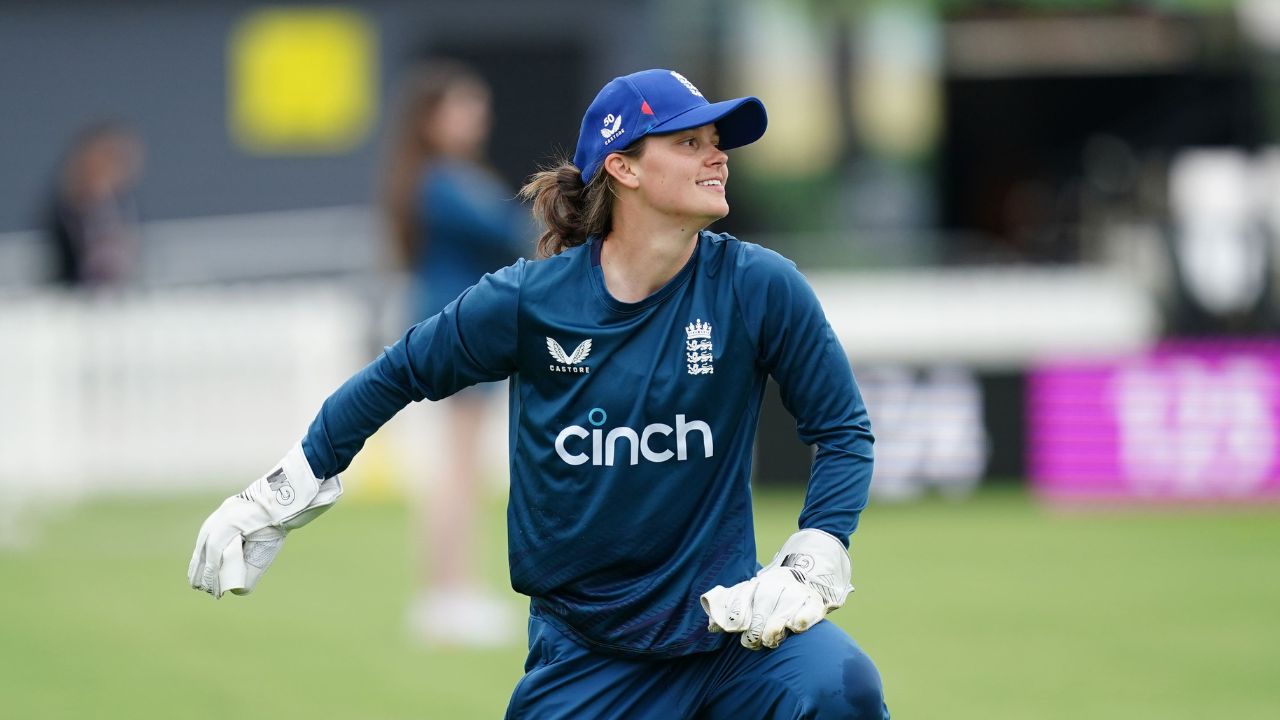Introduction: A Night of Glory, Grit, and Greatness in Navi Mumbai
Under the glowing lights of Dr. D.Y. Patil Stadium, Navi Mumbai witnessed one of the most unforgettable nights in women’s cricket history. Jemimah Rodrigues, the young Indian batting sensation, scripted a masterpiece — an unbeaten 127 off 116 balls — to power India into the final of the ICC Women’s Cricket World Cup 2025.
What made this victory even sweeter was the context — chasing a mammoth 339 against defending champions Australia, a team that had dominated world cricket for over a decade. Yet, on this electric night, it was Jemimah who stood tall, silencing doubters and proving why she is the heartbeat of Indian women’s cricket.
A year ago, Jemimah was under pressure, facing criticism after a string of poor performances. But she answered every question — not with words, but with her bat.
Let’s dive deep into this incredible semi-final, Jemimah’s redemption story, and some of the most asked questions about India’s rising stars and their personal journeys.

Match Summary: India vs Australia – A Semi-Final to Remember
Australia won the toss and elected to bat first — a decision that initially seemed justified. Their top order fired on all cylinders, led by Alyssa Healy’s quickfire 82 and Ellyse Perry’s 91, propelling them to a daunting total of 338/6 in 50 overs.
India’s chase began shakily, with Shafali Verma dismissed early. But from the other end, Jemimah Rodrigues took control of the game with calm authority. She built crucial partnerships — first with Smriti Mandhana (64) and later with Harmanpreet Kaur (57) — before finishing things off in style with back-to-back boundaries.
India reached the target with four balls to spare, sparking euphoric celebrations across the packed stadium. The victory marked one of India’s greatest chases in women’s ODI history — a performance that will be remembered for generations.
Jemimah Rodrigues: From Criticism to Crowned Hero
In 2024, Jemimah Rodrigues faced a tough phase in her career. Critics questioned her consistency, and some even doubted her place in the national squad. But true champions rise in adversity — and Jemimah’s innings in the 2025 semi-final was the perfect reply.
Her 127* was an innings of patience, precision, and power. She adapted to the conditions beautifully, rotated the strike smartly, and punished loose deliveries with trademark elegance. By the time she hit the winning runs, the stadium echoed with chants of “Jemimah! Jemimah!”, a name that will forever be etched in Indian cricketing folklore.
Smriti Mandhana’s Support: The Perfect Partner in Crime
While Jemimah stole the limelight, Smriti Mandhana’s 64 off 72 balls was equally vital. Her fluent strokeplay kept India in control during the early overs, allowing Jemimah to settle in. The left-right combination frustrated Australian bowlers and laid the platform for the historic chase.
Mandhana’s leadership qualities and composure have made her a role model for young cricketers. As India moves toward the final, her experience will be key to ensuring the team’s continued success.
Which Cricketer Changed Their Religion?
Religion and personal belief are deeply private matters, yet fans often express curiosity about the faith journeys of their favorite cricketers. Over the years, a few cricketers have indeed changed their religion for personal or philosophical reasons.
One such example from global cricket is Wayne Parnell, a South African fast bowler who converted to Islam in 2011, adopting the name “Waleed.” His decision was based on personal conviction and mutual respect from teammates.
In India, most cricketers tend to keep their religious beliefs private and rarely make public statements about them, emphasizing unity beyond religion in the game.
Cricket, after all, remains a sport that unites fans from every faith, background, and belief.
What Is Smriti Mandhana’s Religion?
Smriti Mandhana, India’s stylish left-handed opener, was born in Sangli, Maharashtra, into a Hindu family. Her father, Shrinivas Mandhana, was a district-level cricketer who played a key role in encouraging her early passion for the game.
Smriti’s calm demeanor, discipline, and respect for all faiths have made her one of the most admired athletes in the country. Though proud of her roots, Smriti has always represented the inclusive spirit of Indian cricket, often saying,
“On the field, there is no religion — just the Indian jersey and the love for cricket.”
Her focus remains purely on performance and inspiring the next generation of women cricketers in India.
What Is Shubman Gill’s Religion?
Shubman Gill, one of the brightest stars in Indian men’s cricket, hails from Fazilka, Punjab, and belongs to a Sikh family. Known for his discipline, humility, and quiet confidence, Gill’s rise from domestic cricket to the international stage has been nothing short of meteoric.
He’s often seen wearing a “kara” (a Sikh bracelet) — a symbol of faith and strength. Gill credits his family’s values and spirituality for grounding him amid fame and pressure.
His performances for India, especially in Tests and ODIs, have earned him comparisons with cricket legends. But despite the spotlight, Shubman continues to be guided by his faith and a strong sense of purpose.
The Cultural Harmony of Indian Cricket
India’s cricket team has always been a reflection of the country’s diversity — players from different states, languages, and religions come together under one flag.
From Mohammed Shami’s fiery pace to Virat Kohli’s aggression, Harmanpreet Kaur’s leadership, and Smriti Mandhana’s grace, Indian cricket has become a symbol of unity in diversity.
The team’s success is built on mutual respect, shared dreams, and a collective hunger to make India proud — values that transcend any individual belief system.
India’s Road to the Final: A Journey of Redemption
India’s path to the final hasn’t been easy. The team started the tournament with mixed results — early losses to England and South Africa put pressure on the squad. But since then, they have bounced back spectacularly, winning key games against New Zealand and Sri Lanka.
Coach Ramesh Powar credited the team’s mental resilience and the leadership of Harmanpreet Kaur for turning things around.
“These girls believed in themselves even when no one else did. That belief has brought us here,” he said in the post-match press conference.
Now, with momentum on their side, India heads into the final — possibly against England — with renewed confidence and purpose.

Moments That Defined the Match
- Jemimah Rodrigues raising her bat after reaching her hundred — a smile of relief and triumph.
- Smriti Mandhana hugging Jemimah after the winning shot — a moment of pure sisterhood.
- The packed DY Patil Stadium chanting “India! India!” as tricolors waved in unison.
- A teary-eyed Jemimah dedicating her innings to her parents:
“They stood by me when I failed. This one’s for them.”
Fans and Experts React
Social media exploded with tributes to Jemimah Rodrigues.
Former Indian captain Mithali Raj tweeted:
“What a chase! What composure! Jemimah, you’ve written history tonight.”
Australian legend Meg Lanning also praised the Indian side, saying:
“India were simply outstanding. Jemimah played one of the best innings I’ve seen in women’s cricket.”
Conclusion: Beyond the Scoreboard – A Night to Remember Forever
The India vs. Australia semi-final wasn’t just a cricket match — it was a story of redemption, unity, and dreams.
Jemimah Rodrigues’ century reminded the world that belief can conquer any challenge. Smriti Mandhana’s class, Harmanpreet Kaur’s leadership, and the entire team’s spirit showcased the essence of Indian cricket — fighting together, never giving up.
As India prepares for the grand finale, one thing is certain — this victory has already become part of cricketing legend. And at its heart stands a young woman named Jemimah Rodrigues, who turned doubt into destiny and lit up Navi Mumbai with a night to remember.








